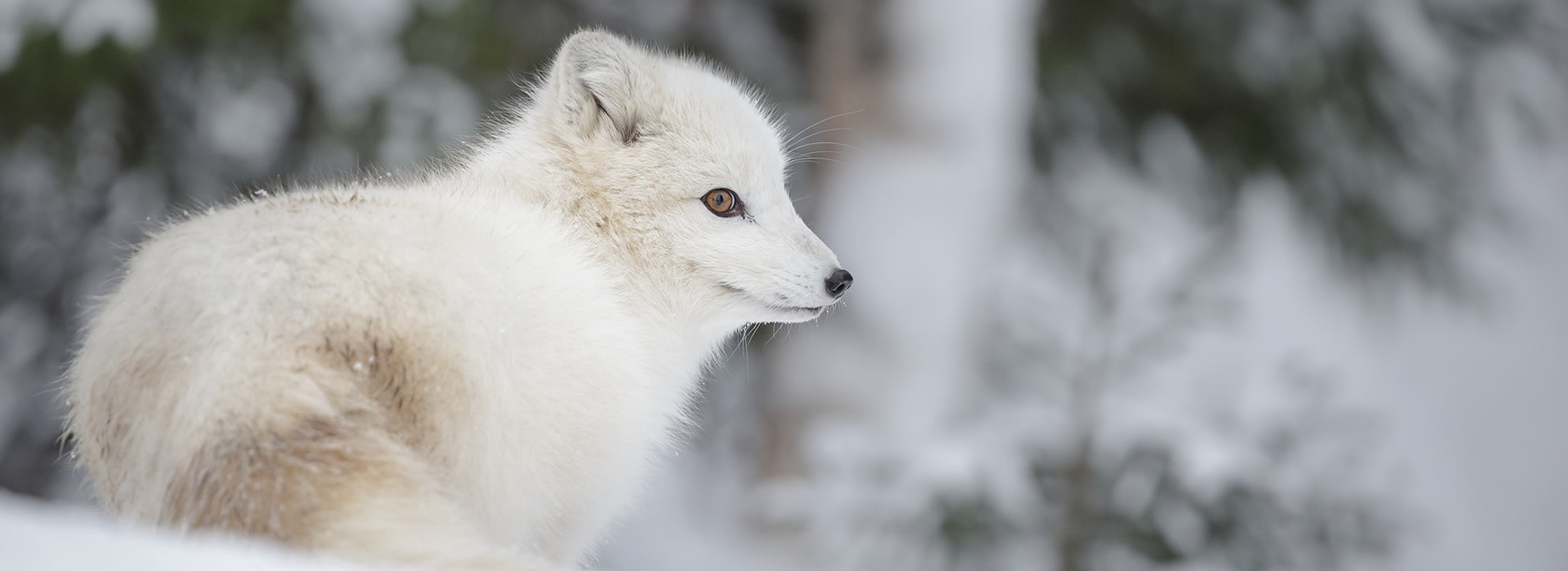94 Animal Adaptations In The Tundra Biome
Though the tundra is remote it is increasingly threatened as people encroach on it to build or drill for oil for example. However one of the most famous worldwide is the snow leopard.
Here are a few adaptations that make them suitable to this biome.

Animal adaptations in the tundra biome. Then they hibernate or sleep during the winter. Land biome characterized by little rainfall and extreme changes in temperature. The shape of a birds.
The Polar bear are the most recognised animal of the Tundra. Fur - Most animals have thick layers of dense fur that protects them from the cold as well as providing warmth by trapping solar heat in the hair. Examples of physical adaptations the thickness of an animals fur helps them to survive in cold environments.
The Tundra Biome is a learning set containing 3-part cards description cards information posters student booklets for coloring and practicing handwriting and research worksheets for students to learn about the tundra biome. This fur is shed during summer to prevent overheating and is thicker during winter to provide the most warmth possible. Physical adaptations are special body parts such as shapes skin and color that help the organisms to survive in their natural habitat.
Land biome characterized by cold temperatures high winds and small plants. Mosquitoes Aedes nigripes for example have a chemical compound that acts as antifreeze lowering the freezing temperature in their bodily fluids. Animals need shelter and insulation in the Tundra.
Animal adaptations in the tundra biome animals have many adaptations to survive in this harsh environment. The mosquito Culicomorphae Culicidae lives in the tundra biome another insect is a special type of moth Arctic Jutta it lays its eggs on a type of grass found in mostly the tundra. A few of the common north american animals if the alpine tundra are marmots mountain goats bighorn sheep and pika.
Students will learn about the main characteristics of this ecosystem an. Certain plants in the tundra have hair covering their stems and leaves. It usually weighs about 6 pounds and is about 12 inches in length.
Food and feeder relationships are simple and they are more subject to upset if a critical species disappears or decreases in number. The biota and its adaptations In Arctic and alpine tundras the number of species of plants and animals is usually small when compared with other regions yet the number of individuals per species is often high. The animals here tend to have thicker and warmer feathers and fur.
Tundra insects have also developed adaptations for the cold. Some Tundra Plants Are Protected by Hair. Animal adaptations in the tundra biome animals have many adaptations to survive in this harsh environment.
Just as fur traps air and acts as an insulator in animals hairy outgrowths on plants keeps their temperature more moderate and prevents freezing. Animal Adaptations in the Tundra Biome Animals have many adaptations to survive in this harsh environment. This is a fairly small animal with a very thick coat.
Hibernation is a combination of. The fact that many animals do not live year-round in the tundra means they leave or migrate for a length of time to warmer climates. They are solitary animals that will do very well in the tundra biome due to their adaptive nature.
The Arctic Fox is able to survive in the tundra biome. Examples of Structural adaptations of animals in the Arctic Tundra include. Tundra insects have also developed adaptations for the cold.
Animals that live in the tundra have special adaptations that allow them to survive the extreme temperatures and conditions that are present in a tundra. Animal adaptations Migration and hibernation are examples of behavioral adaptations used by animals in the Arctic tundra. This fur is shed during summer to prevent overheating and is thicker during winter to provide the most warmth possible.
For example marmots are found in the carpathians apennines and pyrenees in eurasia in the deosai. Another insect is one who is specially adapted to hiding from its predators by blending into the arctic environment and this one is called Arctic White. Warm-blooded thick fur able to store fat likely to migrate or hibernate.

